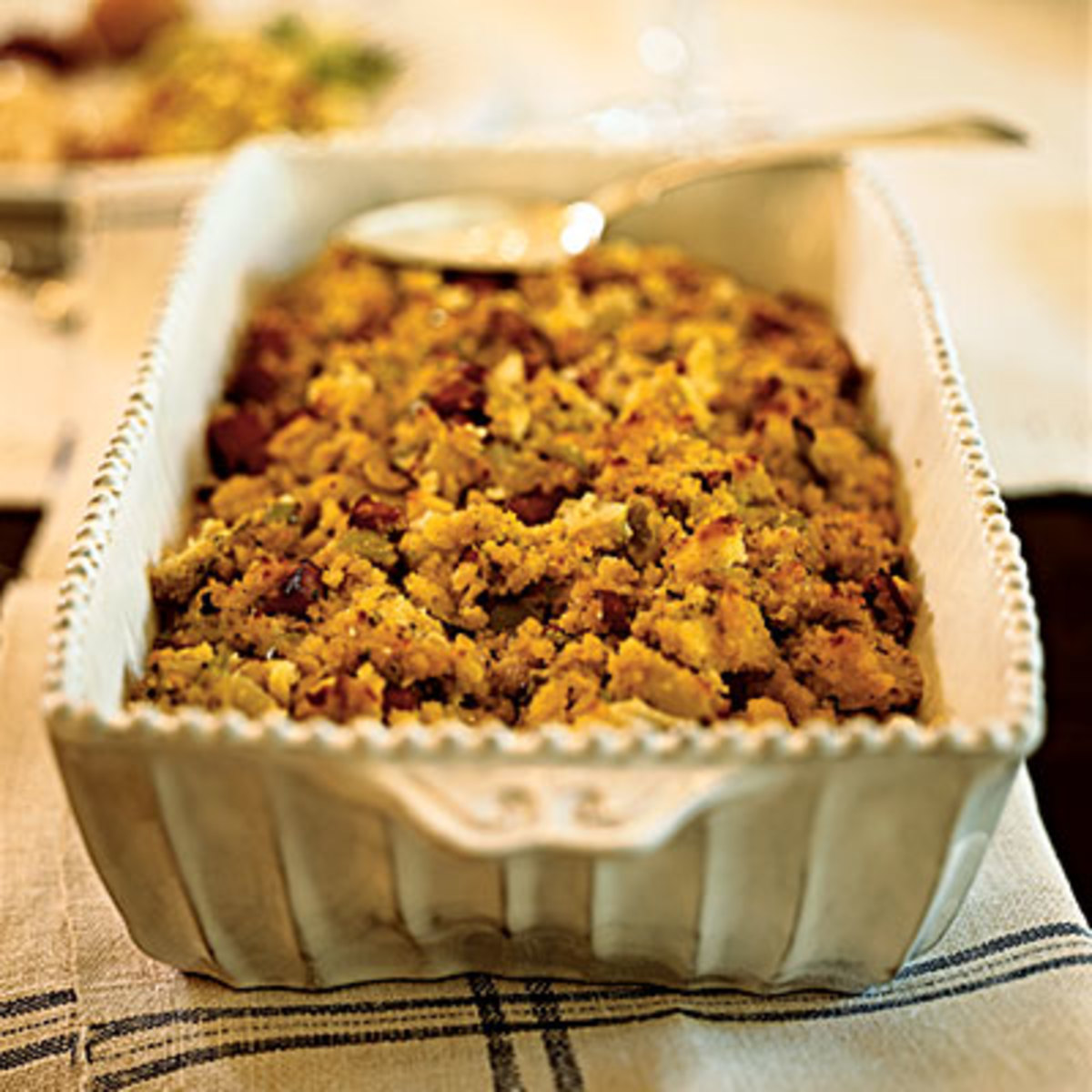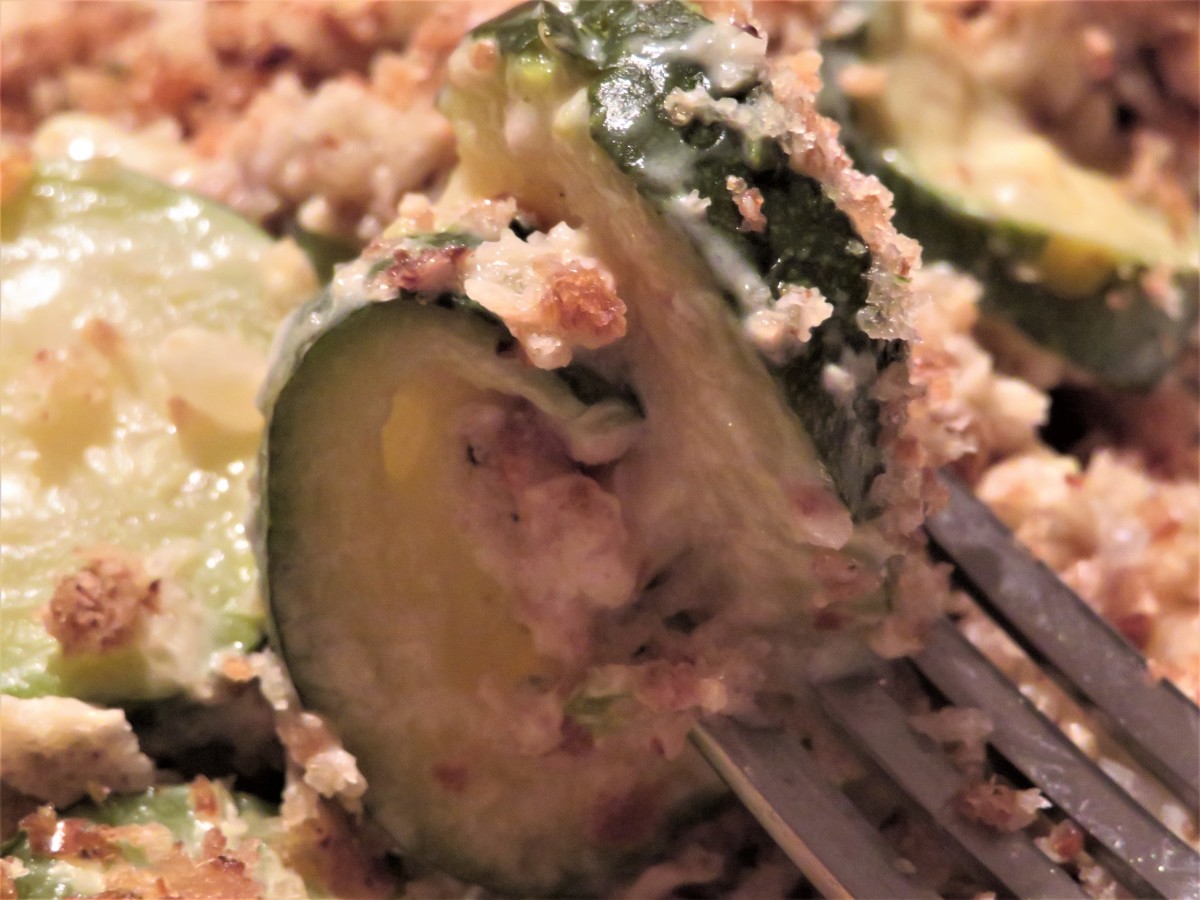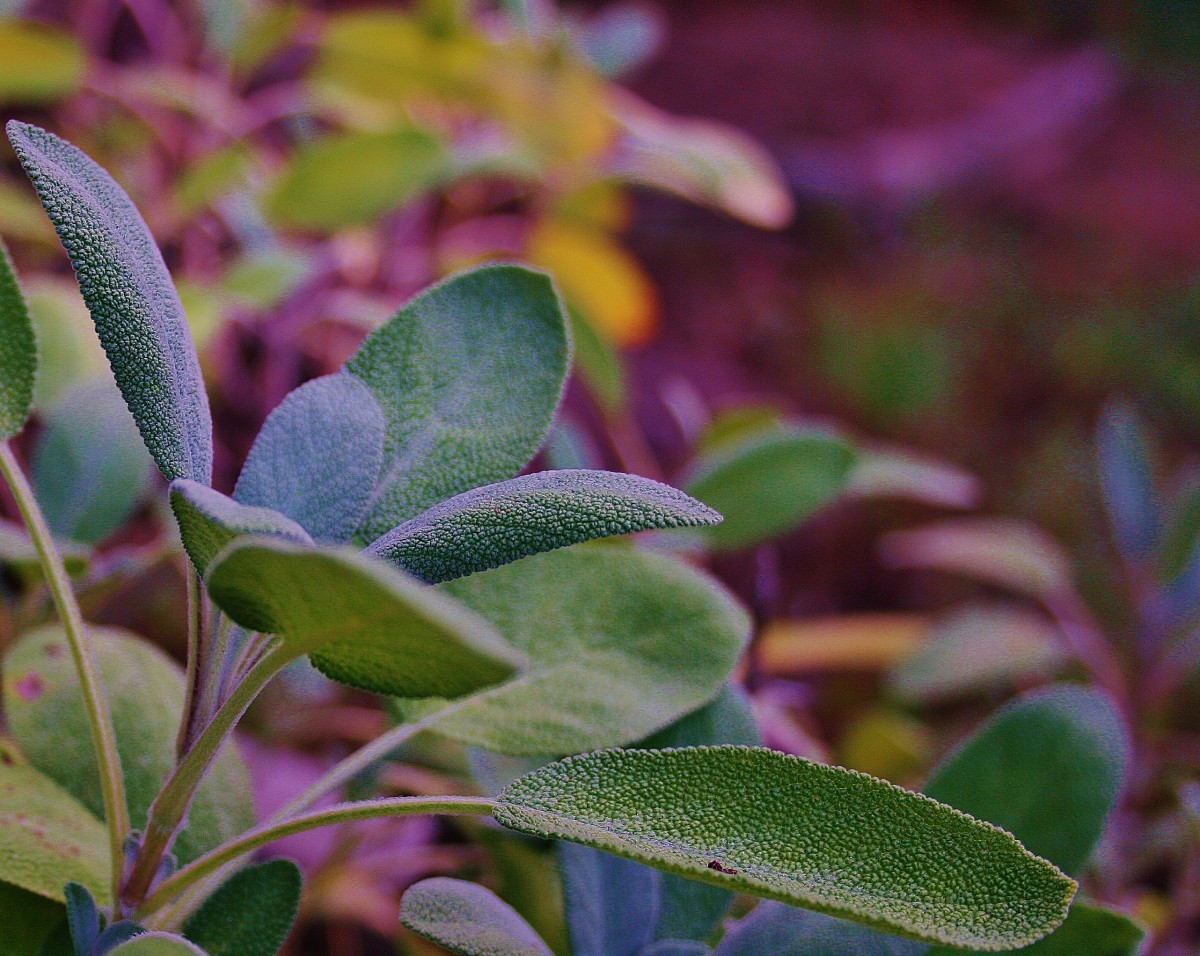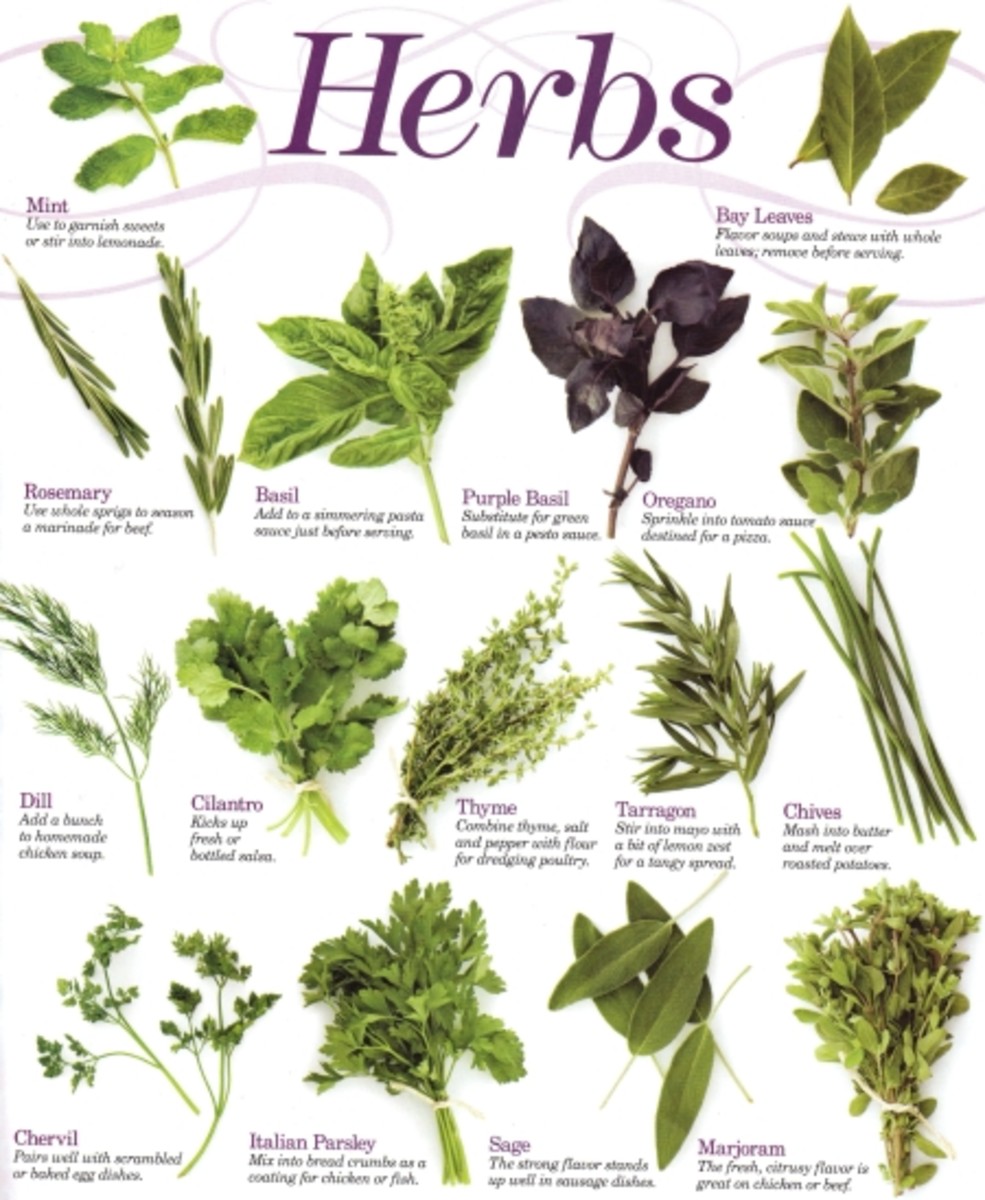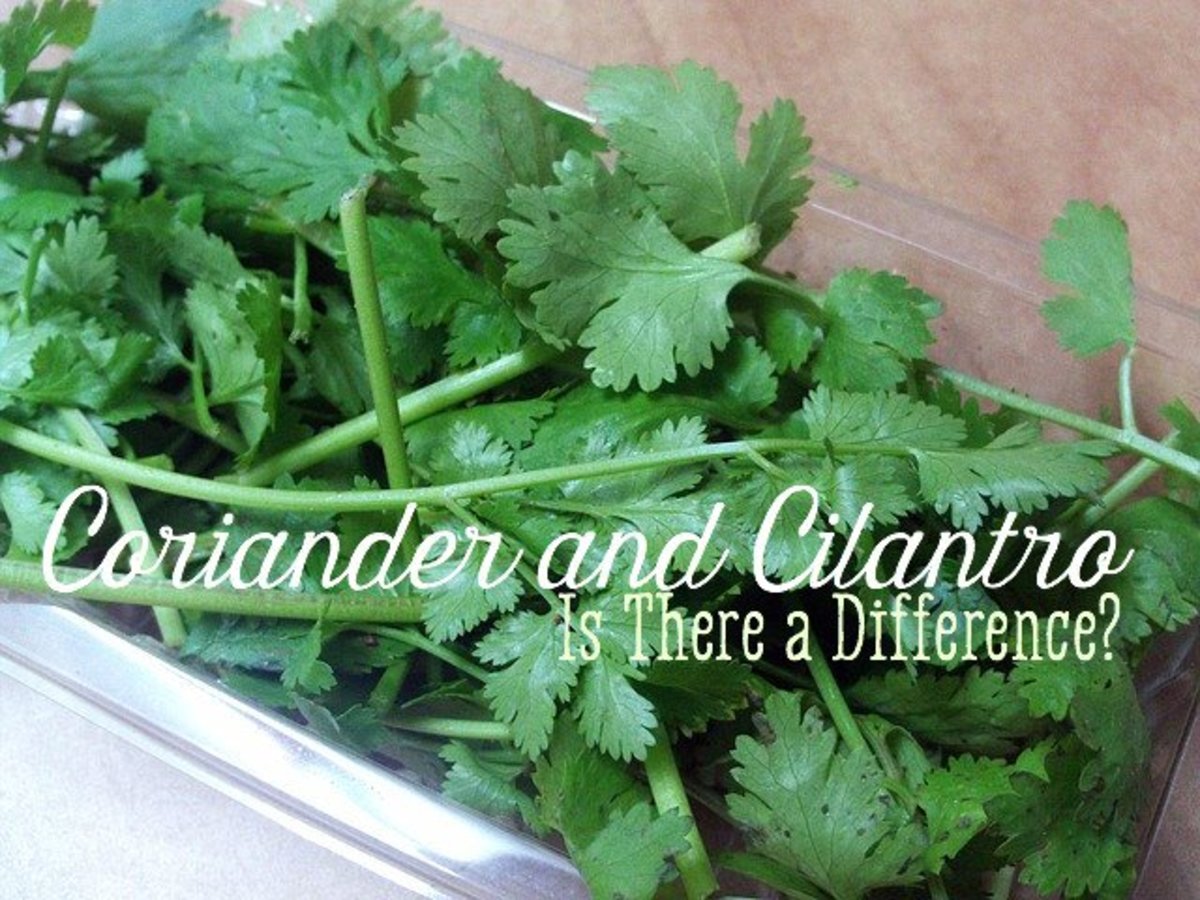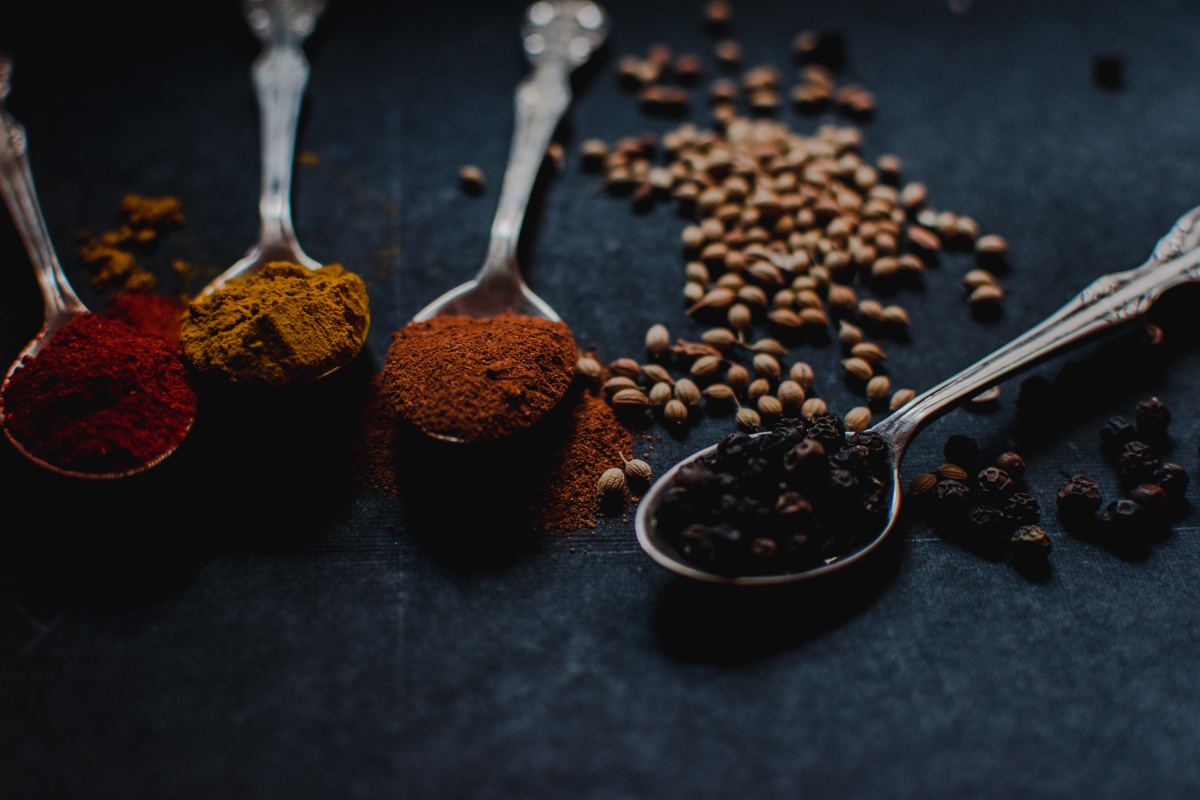Sage, How To Use It
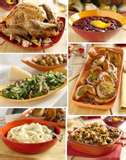
Dressing and Stuffing
Cornbread
Three Day Old Bread
Biscuits
Pork
Turkey
Venison
Duck
Apples, walnuts, chutney, celery......whatever you put in or leave out, most stuffing and dressing recipes use Sage. The only difference I note in the two, is stuffing is stuffed into the cavity of the bird. Dressing is baked in a separate pan.
The holidays will soon be upon us, and most families have an unofficial stuffing maker. Some families, have cooks who compete for the distinction! It must be interesting at that table.....
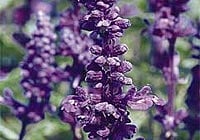
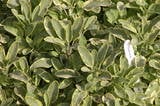
What Is Sage?
Sage is an evergreen perennial shrub with pale green leaves. The flowers bloom in summer. It is the leaves and oils that we use.
Sage is a natural astringent, and antiseptic. It smells somewhat like camphor.
As a seasoning, it is strong. It is one of my personal favorites, and when using it, I do tend to increase the recommended quanity.
Beyond The Holiday Dinner
Sage is also known as garden meadow. It has a long history. The properties of sage have made it useful to cooking and to healing. There is an old French term, from Medieval times, applying to sage, which translates loosely, to ' all is well '. That sounds comforting to me.
It has been known to treat wounds from snakebites. I wonder if my Grandmother added sage to the bacon, she wrapped around snakebites.....
Modern research has shown that sage can help reduce excessive perspiration, digestive problems, sore throats, premenstrual cramps, and high blood sugar.
Sage was once recommended by herbalists to treat fever, a usage that probably arose from sage's ability to reduce perspiration. It is now common to find sage-based natural deodorants in health food stores.
Like cloves, sage is also an active ingredient in some natural mouthwashes, and tooth ache remedies. Sage guards against several bacterias.
There is no supporting evidence, but it does seem that sage opens my sinuses and aids a congesting breathing. Perhaps, that is simply because I like the spicy scent.
Sage has a long history of use as a treatment for gastrointestinal disorders. One German study has found that drinking a sage infusion reduced blood sugar levels in people with diabetes. This is effective on an empty stomach only. The holiday dressing is not going to be of much help in this.
Sage is available commercially . It's also easy to grow and dry your own sage. This herb is a perennial. The plant should be replaced about every four years, as it gets tough and woody.
Strip the plant down, cut the leaves and dry; harvesting has been made simple.
For a homebrewed sage tea, use 1 to 2 teaspoons of dried leaves per cup of boiling water. Steep for 10 minutes, then strain. Use this infusion as a gargle for sore throat or as a mouthwash for gingivitis.
There is some evidence that sage may help stimulate uterine contractions.
For more on growing, harvesting and drying sage, this site is quite useful with easy to follow instructions.
http://www.howtogardenadvice.com/plant_list/herb/grow_sage.html
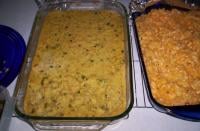
This Is How I Do My Dressing
1/2 cup of fat---use butter, bacon grease, or a combo
(do not use margarine) it is a poor substitute
2 medium onions, chopped
3 stalks of celery, chopped
1/4 cup of chopped green bell pepper--optional
6 cups of cooked, crumbled cornbread, 1-2 days old
6 cups of any dry bread, also crumbled
1 teaspoon salt
1 teaspoon black pepper----or to taste
1 teaspoon of poultry seasoning
2 teaspoons of sage-----I have a heavy hand on this, adjust this to suit yourself
4-6 cups of turkey or chicken stock, more or less , depending on taste
6 boiled and chopped eggs
Break up the breadsand toast in oven or in a heavy skillet on the stovetop.
Mix well with other ingredients. The mixture should be moist, but not 'runny'.
Put into a roasting pan that has been sprayed or greased.
Do not pack..... use a second pan if one is needed
Bake at 350 degrees for 45 minutes.
For a moister stuffing, use all of the liquid and baked covered.
For a drier stuffing, with a crunchy top, use minimum liquid and bake uncovered. I like mine dry and crunchy, but make yours for you.
This is 12 cups of bread!.......if you are cooking for a small meal, adjust accordingly.
My Grandmother told me, if you break apart the cornbread and see 'spiderwebs', it is perfect for dressing or stuffing.
Other Culinary Uses
Sage can be combined with other herbs, usually thyme. It can be used in soups and bean dishes. Some use it with potatoes and other vegetable side dishes. It does have a strong flavor, so use lightly.
Sage is a natural compliment to many cheeses. Sprinkle some on your next grilled cheese sandwich.
Anytime, I am roasting poultry, I give it a rub down with sage and black pepper.
Would You Like To Join Us At HubPages?
Want To See More?
- onegoodwoman on HubPages
A little about me, and a listing of the Hubs , I have written,




